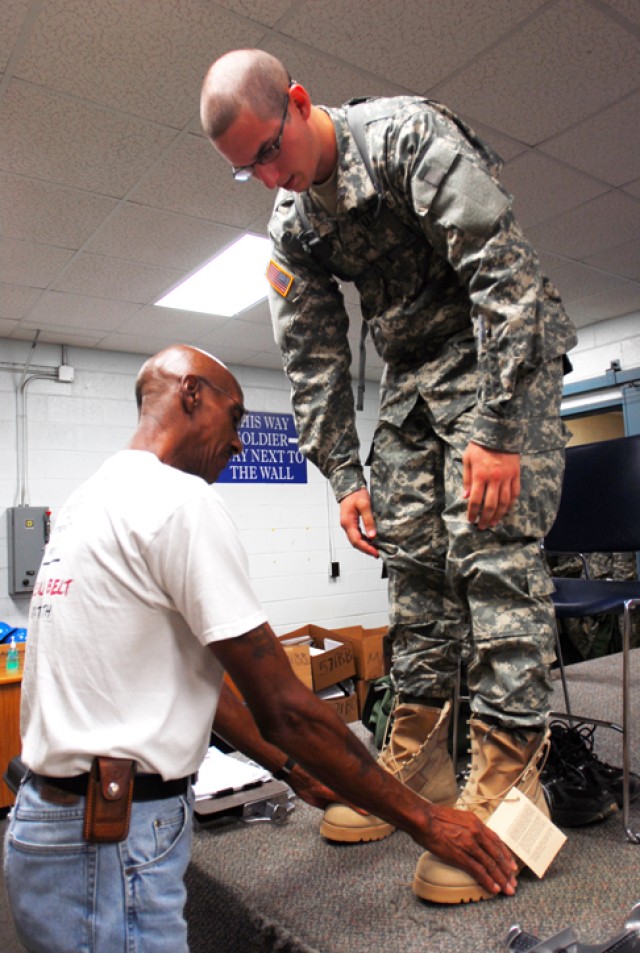FORT BENNING, GA - A painful foot blister or stress fracture can slow a Soldier down. One way the 30th Adjutant General Battalion (Reception) is helping troops combat the effects of daily ruck marches and running is to ensure they are properly fitted for combat boots and tennis shoes.
Boots and tennis shoes provide protection and support for the foot in a variety of environments, from sand to grass to asphalt but to get the benefit of the support, the footwear must fit right, said Willie Smith.
Smith has worked at the 30th AG's Clothing Initial Issue Point for more than 30 years. He fits approximately 175 Soldiers a day for combat boots.
The shop issues boots to Soldiers all over Fort Benning, not just basic training troops, he said.
When fitting a Soldier with a pair of boots "we rely partly on what they say and partly on what we see," he said.
Smith takes foot measurements using a standard measuring tool called a Brannock device. It measures the length and width of each foot. The CIIP offers boots in a range of sizes and widths to accommodate nearly any Soldier walking through their door, he said.
Occasionally, a Soldier walks through the door with a unique pair of feet requiring custom-made boots.
"Last week, we had a Soldier who needed custom boots because his feet were long and thin," said SSG Glenville Challenger Sr., a senior processor with A Company, 30th AG Bn. "They could fit him in one type of boot, but not the other."
Challenger said special cases are often referred to the podiatry clinic at Martin Army Community Hospital to have a mold of their feet taken and sent off for the custom boots. Smith said depending on the modifications required some boots take between six to eight weeks to make.
But the wait is worthwhile when Soldiers receive custom boots made just for them, he said.
Another way processors at the reception battalion ensure Soldiers get the best fit is with the Aetrex iStep machine.
The iStep offers a comprehensive digital foot analysis in 30 seconds or less, Challenger said.
The device uses nearly 3,800 barometric sensors to measure the pressure exerted by each foot and captures the foot type (such as a low arch or high arch), pressure points and shoe size.
It also gives a digital readout with recommendations on ideal footwear and sizing information related to manufacturers of military footwear.
One of the benefits of the device is it shows where the most stress on the foot is, whether on the heel, the toe or both.
But because computers are not infallible, Challenger said the Soldiers still get measured with the Brannock device after using the iStep.
When getting fitted, Soldiers often have the final say in what's comfortable.
"We check to make sure the boots feel snug, not tight," Smith said. "But we are also asking the Soldier how it feels to him."
"It's about comfort," Challenger said. "We want to make sure when a Soldier leaves the boot rack, he's comfortable with the boots he has."
PVT Steven Harris, a one station unit training Soldier, said he went through two sizes of boots before finding the right fit in a pair of size 12s.
"I've never worn boots before," he said. "I just hope I don't get blisters. I heard a lot of people saying they get blisters and I'm just trying to get the right size so I won't have to go through that."
Challenger said even with proper fitting boots, blisters are a fact of life for new Soldiers.
"You're probably going to get blisters if you've never worn boots before," he said.
Minor blisters may not indicate an improperly fitted boot, but Soldiers with severe blisters should return to the 30th AG to be refitted, he said.


Social Sharing